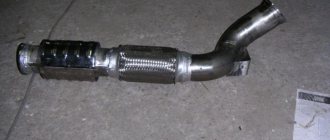Many car owners who are at least somewhat familiar with the basics of radio technology and know how to use a soldering iron have always been attracted by the opportunity to assemble a charger (charger) with their own hands. What is this connected with? Considering the current element base and the huge range of parts that are freely sold in radio stores, everything that is required can be ordered on the Internet. But it makes sense to make do with “improvised” material, taking out electronic elements from used devices. At the same time, there is a wide variety of schemes: from the simplest to complex devices with automatic adjustments. We will tell you how to quickly create a similar house design without wasting too much money.
How to make a charger for charging a car battery with direct current
You will need a device that produces a constant voltage exceeding e. d.s. battery In practice, this is 16.2 V. The source can be automatically adjusted (which is preferable) or manual.
Features of charging a car battery with direct current
During operation of the device, it is necessary to take into account the polarity: “plus” is connected to the “plus” of the battery, “minus” to the “minus”. Only after connecting the wires, insert the plug connector into a 220 V socket.
Using direct current causes some difficulties when compared with voltage charging. The main nuance is the need to maintain the same current value. The easiest way to do this is to use a regular rheostat. But then you will have to constantly monitor the process and, if necessary, adjust the charge current. Another method is to use a special electronic circuit with thyristors, then the required current is maintained automatically:
- 0.1 of the battery capacity, process time 10 hours;
- 0.05 of the battery capacity, the process lasts 20 hours.
If the homemade charger is powerful, you can use 2–3 or more car batteries at the same time. Their number is calculated as follows:
M = In/Ia,
where the first character is the number of battery groups,
Ia – charge current strength,
In – current coming from charging.
The latter can be calculated using another formula: In = Pz/U. Here the second symbol indicates the power of the charger, the third – the voltage of the network from which the charging is powered.
The main advantage of charging a battery with direct current is the ability to complete the process at 100%. This significantly extends the service life of the product. The lower the charge current, the deeper it is. But no time for fanaticism! If the current is too low, the process will drag on indefinitely. On the other hand, if the charge is too intense, the battery will boil and will not be fully charged. However, there are also disadvantages of this method:
- the need to constantly maintain a certain current value;
- strong release of gases;
- possible heating of the product.
You can avoid such troubles by assembling a charger for a car battery with your own hands with a two-stage cycle. First, a current of 0.1 of the battery capacity is applied, U = 14.4 V, after which the current is halved. The total process time is related to the degree of battery discharge. Charging continues until the electrolyte density meets the standard. This is approximately 10–12 hours.
Types of charging for batteries
The process of charging batteries is the restoration of lost power. To do this, use special terminals that produce constant current and constant voltage.
It is important to observe polarity during the connection process. Incorrect installation will result in a short circuit, which will cause parts inside the vehicle to catch fire.
Experienced motorists recommend using direct current. It will take a long time to restore power, but without shortening the service life of the parts. On average, this time ranges from 10 to 15 hours.
To quickly reanimate the battery, it is recommended to use constant voltage. It can restore the car's functionality in 5 hours.
Read here: DIY lighting - LED ceiling lighting. Instructions for installation and selection of basic elements
A simple thyristor-based battery charger
In essence, we are talking about a thyristor regulator. The attached circuit does not contain a protection unit, control module or other bells and whistles. Simplicity and a minimal number of parts determined the popularity of this simple design.
The question arises: isn’t it easier to purchase a ready-made thyristor device in a store? It seems like this is what needs to be done. But factory-made, inexpensive chargers have some problems. For example, the current is adjusted by a solid switch, which simply decreases or increases the turns in winding II of the transformer. Due to this, the current increases or decreases. It turns out roughly, stepwise. And higher quality memory is quite expensive. Therefore, it makes sense to make a simple charger with your own hands. Pros:
- availability of electronic components and their low cost;
- ease of finding the required circuit (via the Internet);
- smooth regulation of charging current (range 1010 amperes);
- use of pulse current, which extends the battery life;
- easy setup;
- stable operation.
The principle of operation of the circuit and the selection of parts
Here is a phase-pulse regulator, where the main elements are thyristors. Below the text is an accessible diagram of a charger for a car battery:
Electronic components of a charger for a car that you want to assemble with your own hands, taking into account the designation:
- C1 – from 047 to 1 µF at 63 V;
- R1 with a resistance of 6.8 kOhm (P = 0.25 W);
- R2 at 300 Ohm;
- R3 at 3.3 kOhm;
- R4: 110 Ohm;
- R5: 15 kOhm;
- R6: 50 Ohm;
- R7 at 150 Ohm power 2 W;
- VD1 – pulse type diode, reverse voltage from 50 V;
- VS1 – thyristor T-160, 250 or KU202;
- transistors with direct junction KT315 or similar (KT3107, etc.);
- transistors with reverse transition KT361, KT 3102, etc.;
- FU1: 10 A fuse (a 15–20 A part is suitable, with a margin).
The thyristor is affected by components VT1 and VT2. Then the diode comes into operation, protecting the circuit from voltage surges that occur on VS1. R5 in a homemade battery charger “calculates” I = 1/10 of the capacity. At 60 A/h, a 6 A charge is used. To know for sure, it is advisable to insert an ammeter on the contacts leading to the product being charged. This will allow you to maintain control over the process.
Now about nutrition. The circuit of a homemade charger for a car battery involves the use of a transformer that produces from 18 to 22 V. For a higher value, increase the resistance of R7 to 200 Ohms. Do not forget to secure the diode bridge elements to cooling aluminum radiators (use special paste). It is worth noting: the use of old-style diodes of the D242 type implies their installation on the radiator through insulating washers. The fuse rating must match the current applied. If this is up to 6 A, then 6.3 A is quite enough for FU1. Below is a diagram for chargers for a car battery (back side of the printed circuit board):
In addition to the fuse, there are electronic ways to guarantee against short circuits and polarity reversal, which leads to failure of the charger. For example, you have a product where it is no longer possible to distinguish between “plus” and “minus”. Then a special circuit will help, signaling that the terminals are connected incorrectly. It must be connected in series between the battery and charger:
Parts used:
- R1 and R2 – resistors with a resistance of 510 Ohms;
- VD1 and MB2 – diodes (for example, 1N4148 or similar);
- VD3 and MB4 (can not be installed);
- any relay for 12 V and 15 A (can be pulled out of your old UPS);
- any LEDs.
The scheme works simply. If the polarity is observed, the charge still present in the battery will close the relay contacts, the process will begin, which will be confirmed by the green LED lighting up. If the contacts are reversed, the red indicator will light up. Below is a printed circuit board of a device that protects against reverse polarity when charging:
Why do you need auto charging?
All batteries accumulate electrical energy as a result of chemical processes that occur in them after voltage is applied. When a consumer is connected, the reverse process occurs - energy is consumed. To restore it, the batteries are charged. In cars, the device that provides charge when traveling is a generator. Its energy is not always enough to maintain performance, especially under conditions of frequent and difficult engine starts and short trips. Then only an external charger helps.
In vehicles, starting lead-acid batteries are used with good endurance and the ability to maintain performance characteristics for a long time. To control the condition, they focus mainly on the overall voltage without detailing individual banks. Overcharging is dangerous for batteries: the electrolyte boils, causing power supplies to quickly fail. Therefore, the on-board network is designed so that the generator constantly undercharges the battery.
This is where the danger lies: the plates become prematurely sulfated, reducing their service life. At sub-zero temperatures outside, even in a heated garage, such processes accelerate. If the battery is constantly recharged using an external charger, it will last a long time.
A good charger, when used correctly, can partially desulfate the plates. Experienced drivers remove the battery after a trip in winter and charge it. This ensures that it can withstand the number of charges and discharges up to 2 times greater than those provided by the factory specifications. With the help of a charger, completely drained batteries can also be saved.
Batteries are characterized by a phenomenon called self-discharge. If the car battery is not used, the capacity drops to 30% within a month. To prevent this from happening, it is placed on a constant low current charge. Then the battery remains operational all the time. Keeping it charged also reduces sulfation.
How to make a constant voltage charger for a battery
This method allows you to charge the battery up to 95% of the standard capacity. One of the disadvantages is the heating of the battery, which is due to the large current value initially. Specifically we can say:
- The method is suitable for restoring the functionality of batteries that are not fully discharged when U = 12.3 V (or more). The procedure involves operating a 14.5 V DC source in conjunction with the battery. The process is considered complete when the drop in current consumption is reduced to zero. Advantages of the method: this is a very simple DIY charger, you don’t need to watch the process, recharging is not scary.
- The described method of how to charge a battery is quite affordable. The design guarantees a current of one tenth of the standard battery capacity. Self-assembly of the charger is simple: you need a transformer, diodes for the rectifier bridge (10 A).
Battery charging scheme:
There are a couple of options here. The voltage is regulated by switching winding II or I. The ammeter is soldered in series, at the output of the rectifier bridge.
Primary requirements
Homemade devices, unlike factory ones, require a slightly different approach to operation. Most of them lack many components that help with charging and increase safety. This happens mainly because craftsmen, having no experience in installing complex electronic circuits, strive to simplify the design.
If there are no automatic control and emergency shutdown devices, the process must be constantly monitored. Leaving the device running unattended is dangerous: there is a risk of battery damage and even fire. Therefore, in a charger made independently, it is advisable to provide components for safe autonomous operation.
They must provide:
- output voltage stability;
- disconnection from the battery when the charging current or voltage is exceeded;
- self-locking - after an emergency shutdown, the device cannot start on its own;
- protection against incorrect polarity connection.
Charger for battery from computer power supply
Surely many car owners, especially those who lived under the Soviet Union at a time of total shortage of everything, had the opportunity to assemble a homemade charger for a car battery with their own hands. There are many circuits, ranging from the simple ones described above to complex ones that only professional electronics engineers can implement. Today you can create your own charger literally in a day from an old computer power supply (you need it to “breathe” at least a little - turn on the coolers). To assemble a charger with your own hands, you will need a 200–250 W unit (you can even use a very old one).
Nuances of voltage regulation on an ATX block with PWM TL494
The main task of the rework is to achieve U = 14.4 V for successful charging of the product. Algorithm of actions:
- Unsolder the wires connected to the board. But leave the green one and solder it to the “minus” (these are current-carrying pads that previously had dark-colored wires). This operation will allow the block to run.
- Take any wires, solder them to the same ground and +12 V bus.
- Next you will have to work with PWM, specifically the TL494 microcircuit or its equivalent. It is necessary to find the 1st contact of the part (lower left).
- Turn the board over and look at the trace coming from the leg of the chip. You will see that the 1st pin is connected to three resistors. We are interested in the resistance connected to the positive terminals of the block. In the photo below it is highlighted in red:
Unsolder the resistor from the board and determine its resistance with a tester. For example, this is 38 kOhm (each computer power supply has its own figure). Solder a couple of wires as shown below:
Find a variable resistance with the same value and solder it to these two wires. Connect the power supply to the network and, by turning the component slider, achieve a voltage of 14.5 V.
There is a nuance: when the voltage rises above 15 V, PWM generation will be disrupted. Then reduce the resistance, and then reboot the unit.
Next, you need to unsolder the variable resistance and measure it with a tester. Select the appropriate part - constant resistance. You can use a pair of components by soldering them in series. Test the operation of the device. For convenience, it is worth screwing on a suitable carrying handle and installing an ammeter. But more on this later.
Selecting and connecting measuring instruments to a homemade charger
During design, many add devices to the design that control the process: ammeters, voltmeters. The price of these electronic devices is low and ranges from a few dollars. The problem is that the market offers a wide range of these products, the connection diagrams of which can vary greatly. Next, we consider the most popular and inexpensive ammeters and voltmeters made in China. Their voltage measurement range is from 0 to 100 V, and current - up to 10 A.
TK1382 and its connection
The cost does not exceed $5. A characteristic feature is the presence of a pair of trimmers for calibrating current (from 0 to 10 A) and voltage (from 0 to 100 V). To power the device, a voltage of 4.5 to 30 V is required. Diagram:
The first option is for connecting any load, the second is for a car battery.
YB27VA and its connection
This ampere-voltmeter has exactly the same characteristics as the device presented above. The whole difference lies in the different layout of the printed circuit board and the different colors of the wires. Estimated cost – no more than $4.5. There are also calibration variable resistors here. Scheme:
The left circuit is suitable for working with any load, the right one is suitable for batteries and chargers. It is recommended to embed the device into the computer’s power supply case and secure it with glue or special paste to make it easier to replace if it fails.
In conclusion, it is worth saying that, based on the above diagrams, it is obvious: assembling a charger with your own hands is not so difficult. Which method to choose depends on the availability of certain components and parts, which minimizes costs. Still, the simplest option is the last one, using an old computer power supply.
Causes and signs of battery discharge
During the operation of the battery, when the engine is running, the battery is constantly recharged from the vehicle's generator. You can check the charging process by connecting a multimeter to the battery terminals with the engine running, measuring the charging voltage of the car battery. The charge is considered normal if the voltage at the terminals is from 13.5 to 14.5 Volts.
Battery charge level table.
Question to the expert
What should be the minimum battery voltage?
The voltage of a normally charged battery during parking should be at least 12.5 Volts. If the voltage is less than 11.5 Volts, the car engine may not start during the start.
To fully charge, you need to drive the car for at least 30 kilometers, or about half an hour in city traffic. Reasons for battery discharge:
- The battery has significant wear (more than 5 years of operation);
- improper operation of the battery, leading to sulfation of the plates;
- long-term parking of the vehicle, especially in the cold season;
- urban rhythm of car driving with frequent stops when the battery does not have time to charge sufficiently;
- leaving the car's electrical appliances on while parked;
- damage to the electrical wiring and equipment of the vehicle;
- leaks in electrical circuits.
Additional material: What is a multimeter and how to choose one.
Many car owners do not have the means to measure battery voltage (voltmeter, multimeter, probe, scanner) in their on-board tool kit. In this case, you can be guided by indirect signs of battery discharge:
- dim lights on the dashboard when the ignition is turned on;
- lack of starter rotation when starting the engine;
- loud clicks in the starter area, lights on the dashboard going out when starting;
- complete lack of reaction from the car when the ignition is turned on.
If the listed symptoms appear, first of all you need to check the battery terminals, if necessary, clean and tighten them. In the cold season, you can try to bring the battery into a warm room for a while and warm it up.
Do-it-yourself charger.











